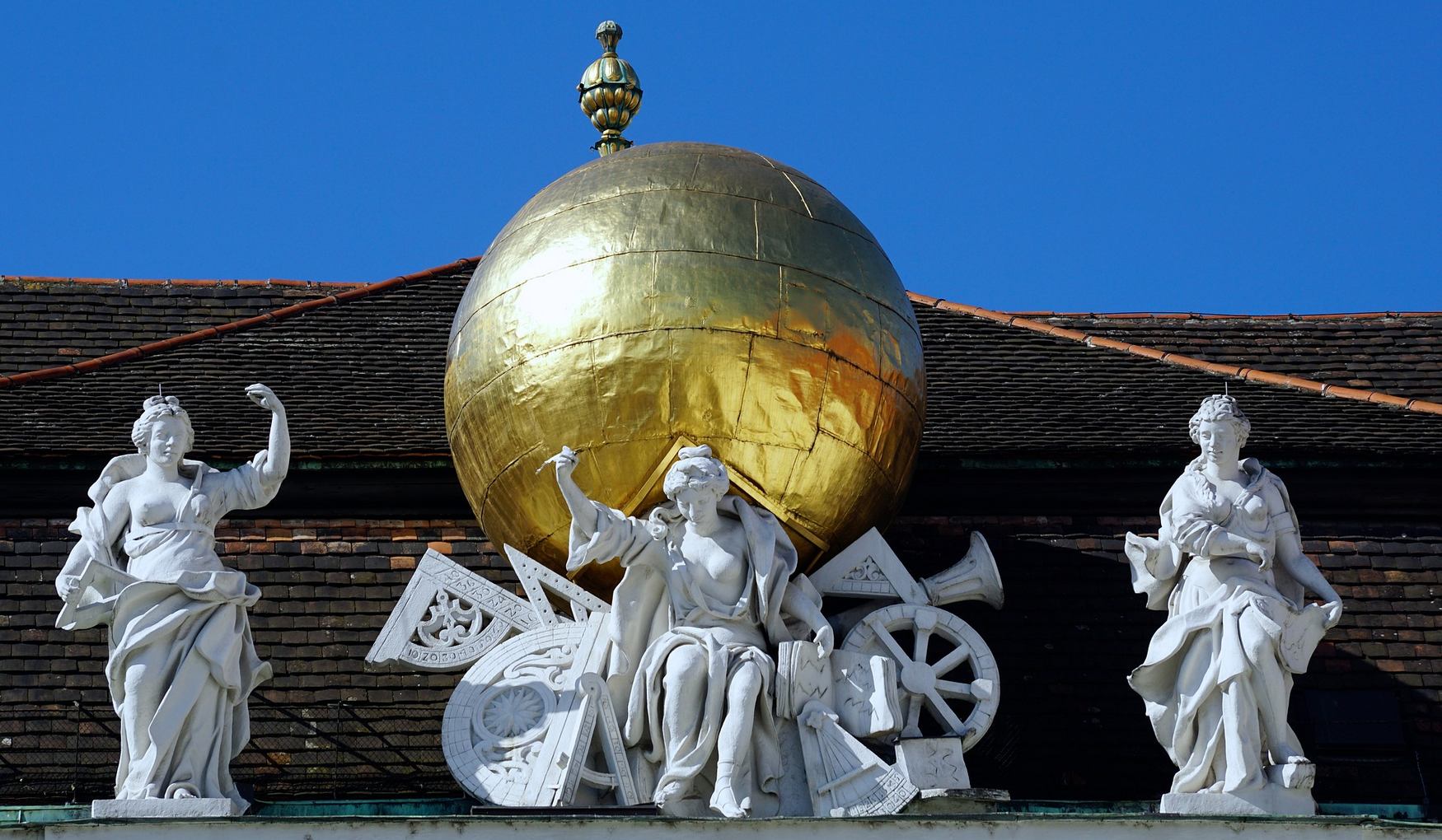A family trip to Vienna is a great idea any time of year. The Austrian capital, which once ruled half the world, welcomes adults and young travellers alike with fine restaurants and eateries, bakeries, cafes and ice-cream parlours, boutiques and street markets, a zoo and an amusement park.
Vienna is famous for its modern and historic museum complexes. If you're travelling with children, be sure to include a visit to the Hofburg, the vast palace complex that is a symbol of the Habsburgs' past glory and Austria's current cultural flowering.
Explore the imperial apartments, unique collections of precious artefacts and art, original tours and unusual activities.
Immerse yourself in the romantic atmosphere of the 'golden' 19th century, immerse yourself in luxury, learn about the life of Amalia Elisabeth of Bavaria (the most popular member of the Habsburg dynasty), stroll through the charming avenues of the Volksgarten and Burggarten parks and have your photograph taken in front of the sculptural and architectural masterpieces of the Neue Hofburg and Heldenplatz in Vienna.
While you're packing your bags and deciding on your family holiday, we'll take you inside the Winter Residence of the Emperors, which is not only one of the most beautiful but also the largest palace complex in Europe.
We'll take you on an excursion into the Hofburg's glorious historical past and a journey into its vibrant and eventful present.
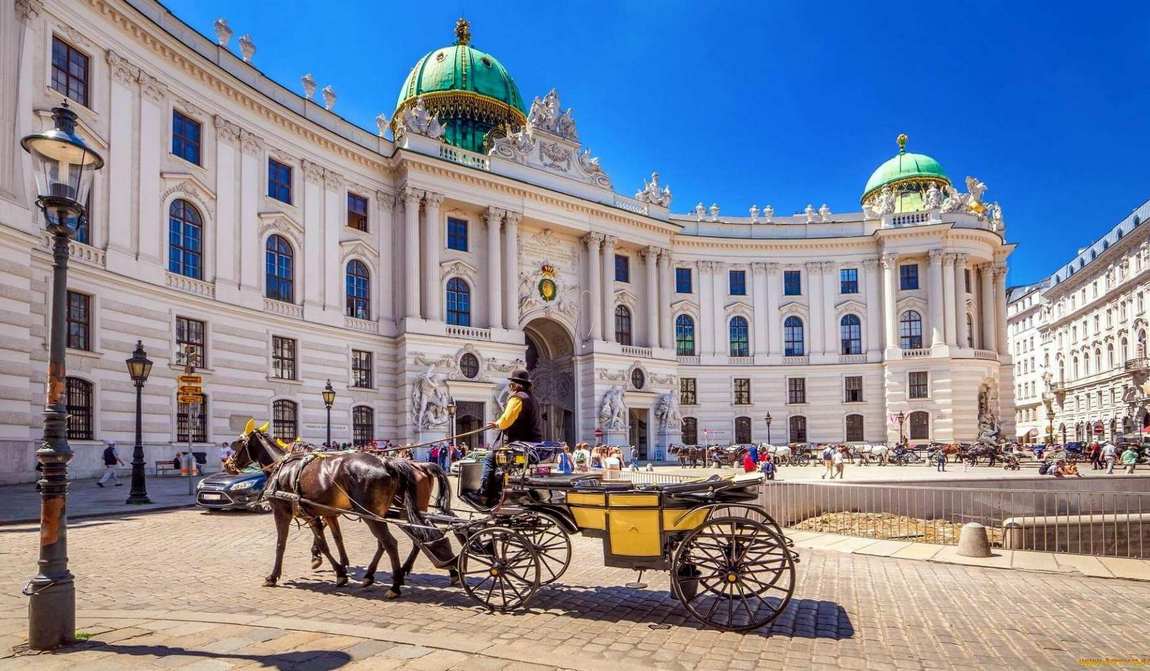
History of the palace complex
The Czech king Ottokar II decided to build the Hofburg in Vienna in 1275, but the foundations had been laid several decades earlier.
For 600 years it served as a veritable fortress for the Habsburg dynasty: first the sovereign princes, then the Holy Roman Emperors and, from 1806, the Austrian Emperors. Each ruler saw it as his duty to enlarge the palace, adding new rooms and whole wings.
The old Hofburg Palace in Vienna is called the Old Castle, although it is more commonly known as the Swiss Wing because it was the home of the Swiss Guard, who were hired to protect the building in the 18th century.
The castle chapel was built in 1449 and is where the Vienna Boys' Choir sings at Sunday mass and on public holidays. Haydn and Schubert once performed in the chapel.
In the 16th century the palace was extensively renovated and given a new lease of life with refined Renaissance colours. One of the surviving Renaissance monuments in Vienna is the Swiss Gate, the work of the architect Pietro Ferabosco.
.jpg)
They are decorated with the Order of the Golden Fleece and the titles of Emperor Ferdinand I. The adjoining building houses a treasury, which still contains the regalia of the Holy Roman Empire and Austria.
The construction of the Stahlburg began in 1559, but it was never used as a residence, as almost all of the space was taken up by the royal stables, which still house the Lipizzan horses.
If you come to its walls in the morning, you can see them being trained. Stallion shows are held at the Spanish Riding School, which celebrated its 450th anniversary in 2015.
The 16th century also saw the construction of the residence of the Empress Wilhelmina Amalia, which was connected to the Swiss Wing in the 17th century by a special corridor (the Leopoldine Wing) decorated in Baroque style.
The rooms of the connecting wing were once occupied by the Empress Maria Theresa, and after her death they were used for official receptions and audiences.
In the 18th century many buildings with Baroque elements were erected, the most splendid of which is the Austrian National Library in the Hofburg, which preserves a priceless literary heritage.
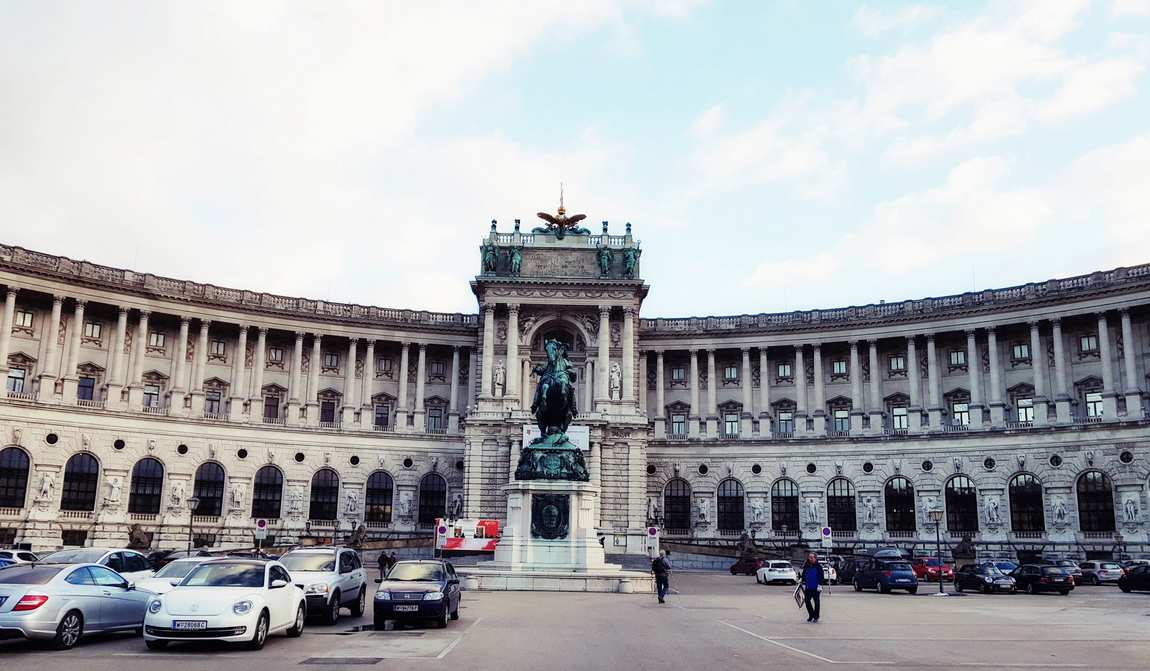
The palace complex (the New Hofburg of Vienna) was not built until the 19th century and now houses a number of interesting museums that are well worth a family visit.
Other rooms include the famous Imperial Chancellery, the St Michael's Wing and the Zeremoniensaal, where society balls are still held.
The complex was completed in 1913. The vast 'city' of the Hofburg in the centre of Vienna was the political centre of the monarchy until 1918; today it is a valuable architectural and cultural heritage of democratic Austria.
Hofburg Imperial Palace: scheme and description
The Hofburg covers an area of 240,000 m2, with 18 wings and 16 courtyards, 24 living, working and reception rooms for the imperial couple and 2,600 rooms for various purposes, in which 5,000 employees still live and work today.
There are a total of 30 points of interest within the vast complex. It's well worth spending a day, or even several days, exploring all its astonishing beauty - the architecture and interiors, the monuments and museums.
The Hofburg Vienna is as magnificent on the inside as it is on the outside. So if you have time, be sure to buy a package ticket to see the Imperial Apartments, the Sisi Museum and the Silver Collection.
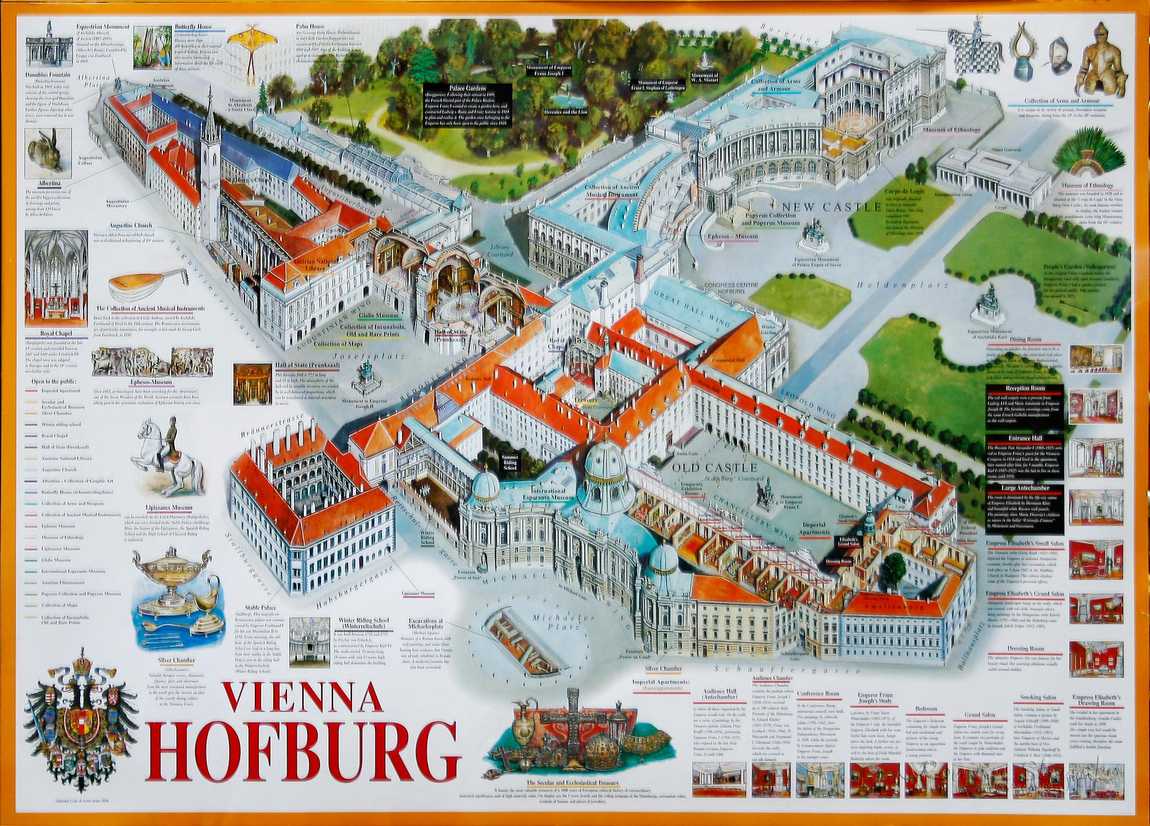
Hofburg museums
In Vienna's Hofburg we recommend a visit to the Imperial Chancellery, which houses several interesting museums.
Austria's treasury
The Imperial Treasury is considered the largest in the world, with a collection of some 7,000 items of religious and secular jewellery.
The most important treasures, however, are the Burgundian relics and Imperial insignia. These include the Spear of Destiny, which belonged to Charles VI, who emerged victorious from all 47 of his battles.
To this day, many believe in the prophecy that whoever holds the Spear of Destiny and can learn the secret of its power will rule the world. Hitler, who brought the spear to Nuremberg, believed in its magical power. The relic was returned to Austria in 1946.
A visit to the Hofburg Imperial Treasury in Vienna will show you Charlemagne's octagonal crown, weighing 3.5 kg and decorated with paintings and inlays inspired by biblical themes, as well as the world's largest emerald, which is displayed in a separate showcase.
.jpg)
All the jewels are inserted into the crown without a setting to create the effect of shining from within.
An interesting fact is that the crown was made in 960 for Otto I. From the 15th to the 18th century this symbol of monarchic power was kept in Nuremberg, Germany and was given to Vienna in 1800, during the Napoleonic Wars.
The last Holy Roman Emperor, Franz II, confirmed in writing his intention to return the relic, but then completely "forgot" his commitment. The two countries are still unable to agree on who owns the treasure, which is why the crown is "non-exchangeable" and can only be seen in the Hofburg.
A collection of old musical instruments
The museum is divided into two halls. The first displays musical instruments made over five centuries, starting with the Renaissance.
The second hall (the Concert Hall) contains working replicas of ancient instruments that can actually be played. Small concerts are regularly held in this room so that music lovers can enjoy the original sound of the ancient harp and harpsichord.
Armoury
.jpg)
The museum has a centuries-old collection of arms from the Habsburg dynasty. Military, ceremonial and ornamental armour illustrate the important role they played in the lives of European royalty and families throughout the centuries.
The armour of Ferdinand of Aragon (1452-1516) and the golden sword of Maximilian II (1527-1576) are priceless exhibits.
Vienna World Museum
The World Museum in Vienna has 14 halls and houses the most important and scientifically serious exhibits in the world.
It contains a total of 200,000 ethnographic objects, 75,000 historical photographs and 144,000 prints on the culture and art of non-European countries. Many of the artefacts were collected by the Habsburgs during their travels around the world, as well as by the explorer James Cook.
The museum's mission is to show the differences and similarities between different cultures and Austria's long and important role in developing relations with other nations.
Papyrus museum
It's hard to believe, but the largest and rarest collection of Egyptian manuscripts is not in Egypt, but in Vienna, at the Hofburg.
Do you want to immerse yourself in the daily life of ancient Egypt? Welcome to the Papyrus Collection, home to manuscript treasures spanning three millennia and of interest to professional researchers and curious visitors alike.
Its 180,000 unique exhibits include not only papyrus, but also masks, ancient drawings, graphics and other cultural and historical objects from the African country.
Kunsthistorisches Museum
.jpg)
One of the largest art museums in the world, it was built by architects Gottfried Semper and Karl von Hasenauer to house the personal collections of the imperial family.
It opened in 1891 and today houses stunning paintings by Western European masters such as Raphael, Velázquez, Rubens, Rembrandt, Dürer, Bruegel, Titian and Tintoretto.
Ephesus Museum
The museum's exhibits focus on the ancient art of Ephesus, capital of the province of Asia, once counted among the Seven Wonders of the World, and home to Heraclitus himself. You'll see fragments of the original altar from the Temple of Artemis and a bronze statue of Dionysus.
The collection is compactly arranged in one room, allowing you to see all the masterpieces of ancient sculpture and architecture in detail.
Palm pavilion
The miniature but bright and colourful Rainforest Pavilion opened in 1822 in the grounds of the Burggarten. The Art Nouveau Orangery is a green glass and metal building. A balustraded staircase with white columns leads to the entrance.
It now houses a large collection of exotic butterflies. Outside the museum there is a park where you and the children can relax on the grass.
The beautiful display of flowering trees and plants is relaxing and inspiring as you walk around the Hofburg. The pavilion is 130 metres long. It consists of three halls, each of which creates a unique climate for the plants growing there.
Sisi Museum
The Sisi Museum in the Hofburg opened on 24 April 2004 in the Amalia Wing. The collection of 300 exhibits was designed by the interior designer Rolf Langenfass.
The museum consists of 6 halls — 6 stages in the life of the legendary Empress, telling the story of her fate, starting with her death at the hands of a terrorist, as if rewinding the film and taking us back to the carefree years of little Sisi's childhood.
.jpg)
The image of Empress Elisabeth of Bavaria is perhaps the most romantic and controversial in the history of European monarchy. Myths and real facts, human gossip and the testimony of contemporaries — all mixed up in the most unimaginable way.
The famous Austrian drama "Sisi — The Young Empress", filmed in 1956 by Ernst Marischka with Romy Schneider in the title role, played a major role in the romanticisation of Her Majesty's personality.
One of Elisabeth's ladies-in-waiting once said: "Her true appearance and the secret of her extraordinary attraction and charm cannot be conveyed by the hand of a sculptor or the brush of an artist. Her name will go down more in legend than in history".
The original exhibits in the Sisi Museum at the Hofburg contrast the iconic figure with historical reality. It contains the empress's personal belongings as well as her most famous photographs and portraits.
There are not many of the latter, as Elisabeth was afraid of growing old and stopped posing after the age of 35. Her most famous portrait was painted by the German painter and lithographer Winterhalter.
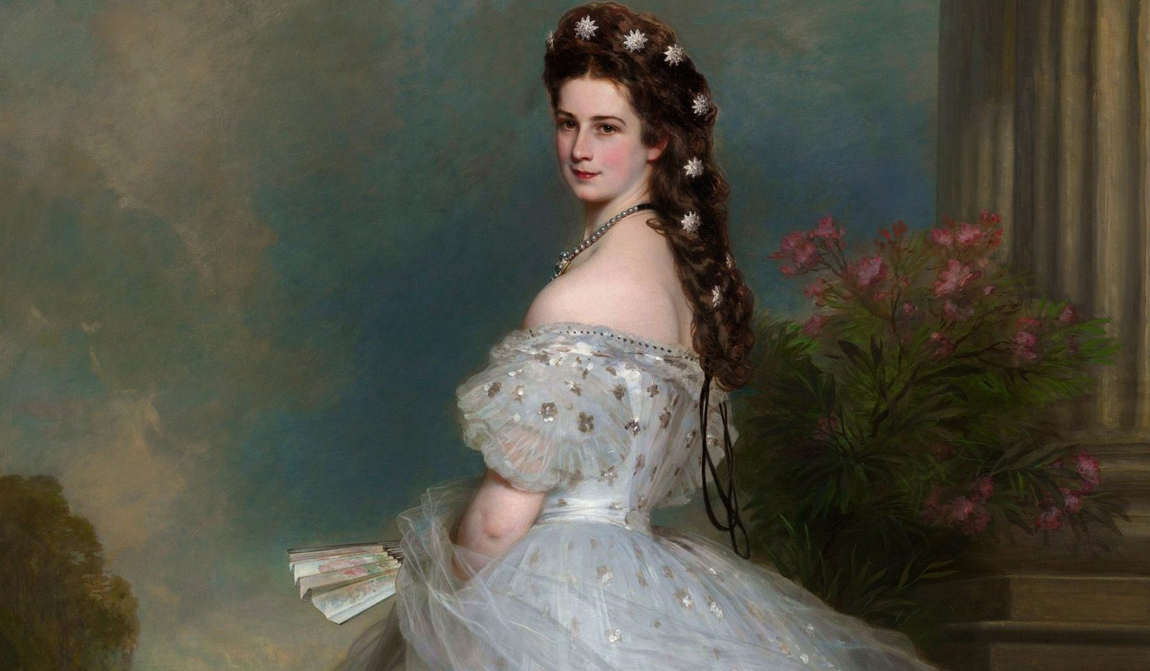
Sisi had always despised palace etiquette, which she nevertheless observed. She had more than enough reason to hate formalities. At 16, she was given in marriage to the 23-year-old Emperor Franz Joseph.
Sisi later claimed that she had been 'sold out', although this did not prevent the couple from genuinely loving each other (at least for the first time). The relationship quickly faded due to monarchical duties and routine, but mutual respect remained.
Despite their affairs on the side, Franz Joseph and Elisabeth always protected each other's feelings and their royal reputations, so as not to offend propriety.
The bitterness of lost dreams of a happy family life drove Sisi into the hauntingly sweet world of beauty and fashion, poetry and travel. Her troubled life is clearly reflected in the museum's exhibits, including:
- Splendid sets of crockery;
- original clothing;
- a reconstruction of Sissy's childhood dress;
- a reconstruction of a hen party dress;
- a reconstruction of a coronation dress;
- a miniature secretary with envelopes, many painted and decorated by Sisi herself;
- a watercolour painting set;
- a travel kit containing 65 jars and boxes of various toiletries and medicines;
- a bathing costume;
- a children's harp;
- a set of agate and onyx jewellery, a mourning piece worn by Sisi at the funeral of her son Rudolf;
- the black dress worn by the empress on the day of her assassination;
- a death mask;
- a milk tooth.
The most remarkable exhibit in the Sisi Museum in the Hofburg is the reconstruction of a luxury carriage of the same name, whose luxurious interior is more reminiscent of the palace salon.
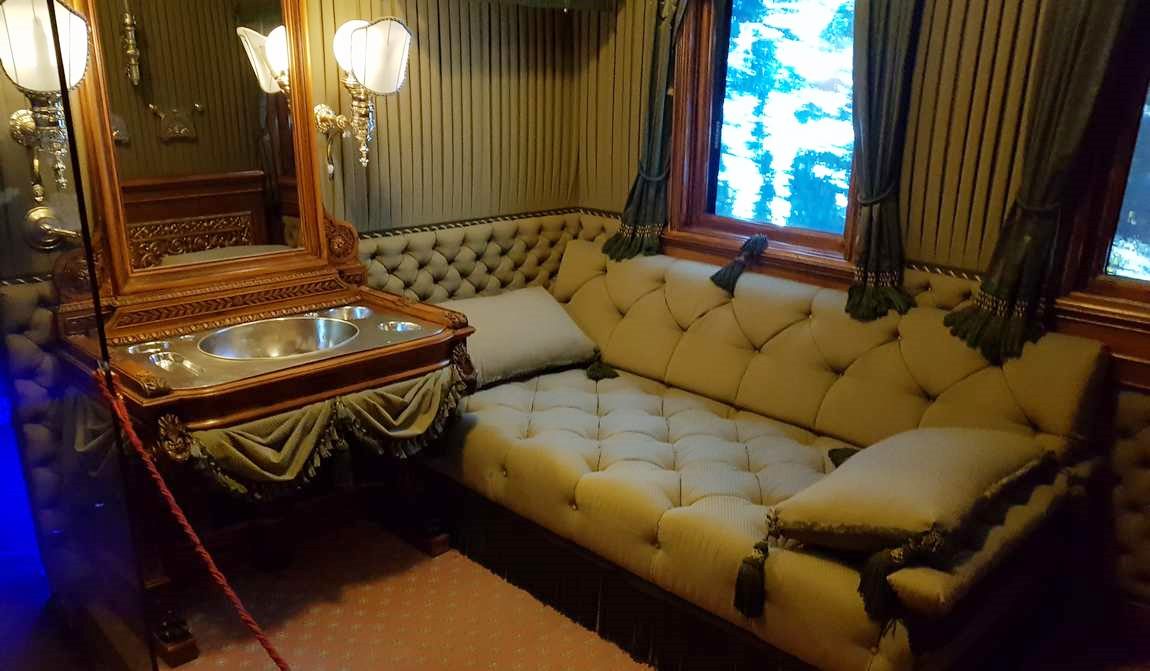
All her life Sisi had been on a strict diet for fear of losing her legendary slim waist (51cm at 170cm). Her only weaknesses were Bavarian beer, Viennese pastries and candied violets, which could be bought at the end of the tour in the Hofburg gift shop.
Silver Chamber
.jpg)
The Museum of Silverware and Porcelain, also known as the Silver Chamber, is located in the Leopoldín Tract. Twenty rooms are filled with exhibits of handmade tableware with beautiful paintings of various themes — birds, flowers, ornaments, etc. The most remarkable exhibit is a bowl with a diameter of 30 metres.
Its most remarkable exhibit is a 30-metre-long crockery and French tableware.
Until the end of the 20th century, some of them were used to set tables for official visits and summits.
The ceremonial tableware of Ferdinand and Franz Joseph and items from the magnificent Minton Service, a gift from Queen Victoria of Great Britain, are particularly impressive.
The Imari Room, named after the Japanese port of the same name, contains oriental-style services. It contains Chinese and Japanese porcelain from the collection of Charles Alexandre de Lorra.
The enormous number of luxury items that served the Habsburg dynasty for a long time includes not only cutlery but also decorative serving accessories - tablecloths, towels, napkins and other items.
The Imperial Apartments
The Winter Residence was set up in a wing of the Imperial Chancellery and provided separate rooms for each member of the family to live, work and rest in comfort.
Most of the rooms of the Habsburg apartments in the Hofburg Museum are now reserved for the work of modern statesmen and are therefore closed to the general public. Fortunately, you can visit the rooms of the last Austrian monarch, Franz Joseph.
The Austrian ruler's apartments are accessed via a marble staircase with carved doorways and gold bowls on the banisters along the entire length of the staircase.
All the rooms have 18th-century ceramic stoves and exquisite furniture made by 19th-century craftsmen. Huge crystal chandeliers suspended from the ceilings lit the rooms with thousands of candles until the 20th century, when electricity was introduced to the palace. The apartments have several rooms for different purposes.
Audience room
.jpg)
It was in this spacious room that Emperor Franz Joseph received visitors, sometimes as many as 100 a day. Each reception lasted only a few minutes.
His Majesty listened to the requests and praises, the petitions for pardons and honours, the complaints and wishes of private representatives of the various social classes in Vienna and other cities of the country. The Palace Regulations provided for a special day and time for such audiences.
The interior is in the Rococo style, with ornamental motifs that replaced the heavy Baroque. Graceful and light, rich and sober, it emphasises the seriousness of the meetings and the grandeur of the gracious emperor.
The combination of gold with red and white furniture and decorations creates a luxurious yet elegant atmosphere. Gold stucco adorns the ceilings and the walls are decorated with portraits of members of the imperial family and paintings by famous artists.
Conference room
It was in this room that the Emperor met with his ministers and other members of the government to decide on important political, economic and security matters for the state.
The interior welcomes us in the same rococo style, but the gold elements are no longer combined with red, but with turquoise and pearl tones. The walls are decorated with paintings, including a portrait of the Emperor at the age of twenty and a marble bust of his mother, Archduchess Sophie.
The Emperor's Cabinet
.jpg)
Franz Joseph spent most of his time in this room. In addition to the luxurious furnishings, there are many objects that were dear to the Emperor's heart, regardless of their artistic or material value.
We are referring to the portraits of his wife and closest friend, the Russian Tsar Alexander II.
There is a lamp and clock on the dressing table, framed photographs on the chest of drawers (many of which also hang on the walls), and the snow-white bed is neatly made.
The room breathes serenity, and Franz Joseph seems to have left it only for a minute. He is about to open the door, sit down at his desk and continue writing letters and going about his other daily business.
Large Salon
.jpg)
The spacious room has white panelling with burgundy tapestries. Gold on the walls, ceilings and doors gives the room a radiant appearance.
This is where the royal family met to discuss their daily affairs, share their impressions and events of the day, and talk to their children. The portraits of Franz Joseph and Prince Rudolf hang here.
Elizabeth's chambers
The apartment has a bedroom, bathroom, toilet, walk-in closet, cloakroom and gym. The latter is equipped with bars and many other sports equipment that helped Elizabeth to keep in great shape.
The original interiors have been preserved in all the rooms, so you can see for yourself what life was like for the magnificent Sisi.
The chambers of Alexander I
The apartments were specially decorated for the Russian Emperor, who came to the capital for the Congress of Vienna in 1815. The Red Salon, where the Emperor rested and received guests, is particularly luxurious and elegant.
What to see in the Hofburg
Equally important in exploring the palace complex are the buildings and outbuildings, which are full of history from bygone days.
New Hofburg
The new Hofburg Palace in Vienna is built in the Neo-Ampire style and immediately catches the eye with its huge arched window openings between which are sculptures depicting historical figures and events in the country over the centuries.
Mollar-Klari Palace
The four-storey Baroque building was built between 1686 and 1689 for Count Mollar. There is a balcony above the arched doorway, and on either side of the main entrance are two symbolic sculptures representing such important Christian virtues as vigilance and prudence. Arched pediments decorate the windows on the first floor.
The palace has changed hands many times, with each owner bringing their own changes to the interiors. The galleries on the ground floor are the most splendid, decorated with huge amounts of gilding and numerous statues of ancient gods and heroes.
The first floor is notable for its playful and airy Rococo design and the massive marble fireplace in the living room.
Archduke Albrecht's Palace
The palace was built in the mid-18th century especially for Albert of Saxony-Teschen, but only became part of the Hofburg at the beginning of the 19th century. Until the end of the First World War it served as the residence of the Commander-in-Chief of the Austro-Hungarian Army.
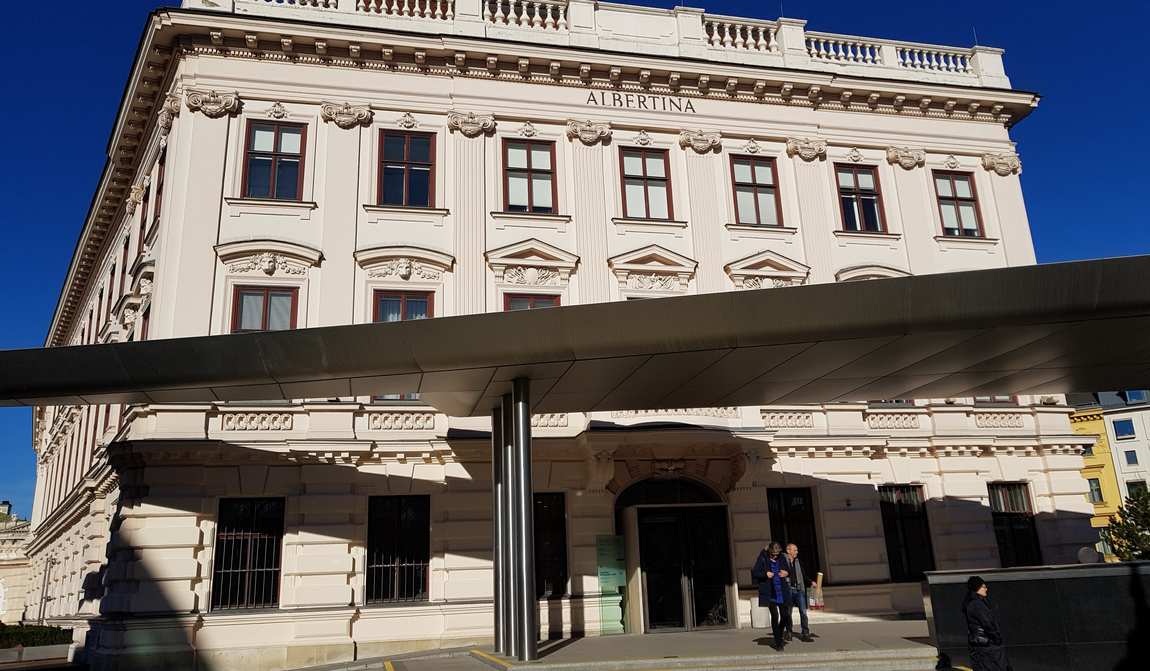
Today the palace is home to the Albertina Museum, world-renowned for its collection of over 60,000 works of graphic art.
Interestingly, unlike other palace exhibitions, the masterpieces of graphic art have always been open to the public. The Archduke insisted that visitors wear a pair of tap shoes when entering.
The museum houses works by Leonardo da Vinci, Michelangelo, Raphael, Peter Paul Rubens, Rembrandt, Dürer, Schiele, Cézanne and many other legendary artists.
Other highlights of the palace include the music collection of the Austrian National Library and the Austrian Film Museum.
Stahlburg
A perfect example of Viennese Renaissance architecture, it is often referred to as a castle, although in fact all its rooms were used to house horses, albeit aristocratic breeds.
The architecture of the building, which dates from 1558-65, is not rich in decorative elements, but it does have graceful loggias with arched openings.
Volksgarten
The Volkspark is located opposite the Neue Hofburg and is one of the most beautiful city parks in Vienna. The exquisite landscaping is the creative genius of landscape architect Ludwig Remy.
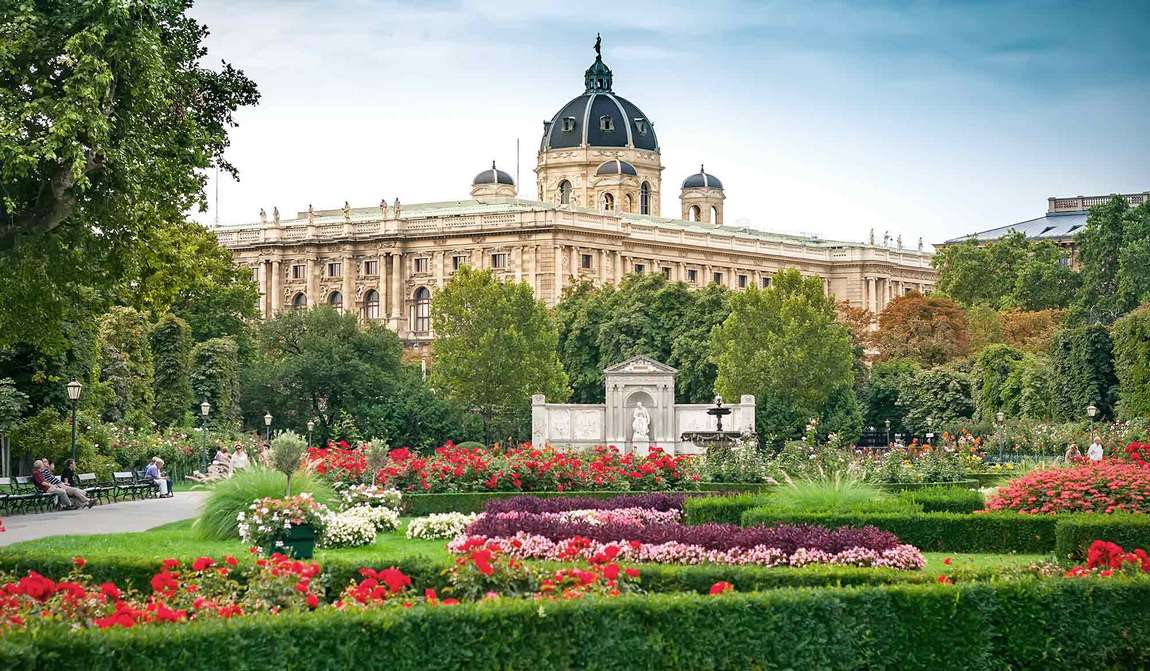
The park is full of flower beds and artificial ponds where ducks swim. Before 1809, the lush greenery was replaced by ancient fortifications destroyed by Napoleon I.
The park's main attractions are the People's Garden and the bronze Triton and Nymph Fountains, as well as the Temple of Theseus - a scaled-down replica of the Temple of Theseion in Athens. Today it hosts temporary exhibitions of works by contemporary artists and sculptors.
Burggarten
The grounds are a quiet, pleasant and well-maintained garden where you can enjoy a small impromptu picnic on the grass.
Situated between the Opernring and the New Wing of the Hofburg, it was the exclusive preserve of Franz Joseph and his wife Sisi until 1909. The park was opened to the public three years after the Emperor's death.
Heldenplatz
Heroes' Square was built in the 19th century as part of Franz Joseph's expansion of the Hofburg to serve as the site of the Imperial Forum.
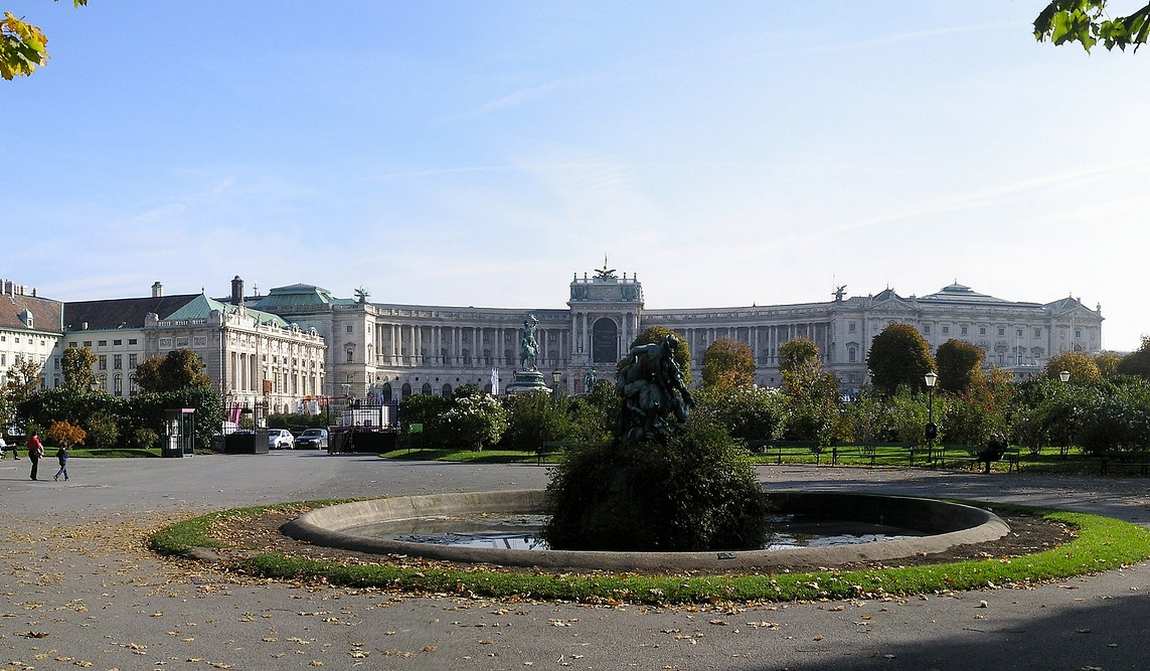
Palace Square is surrounded by the Leopold Wing, the New Hofburg and the Outer Fortress Gate (the Heroes' Gate, a memorial to Austrian war heroes of 1914-1918).
It was here that Adolf Hitler announced the annexation of Austria to the Third Reich from the balcony of the New Palace in 1938. Fortunately, the square has recovered from wartime events and now welcomes visitors with peaceful rallies, colourful parades and cheerful markets.
In der Burg Square
The square is located in the courtyard of the Hofburg Palace and is surrounded on all sides by the Renaissance and Baroque buildings of the Old Palace. In der Burg is famous for its turbulent history.
It is the site of a public court, sports tournaments and military parades. The entrance to the Winter Riding School is in the covered passageway on the left and the Imperial Apartments on the right. You can also buy tickets for the Hofburg here.
St. Michael square
This is Vienna's most visited tourist square, with fountains, statues, horse-drawn carriages - all the makings of a great family day out and a luxurious photo opportunity.
Interestingly, in the middle of the square is a fenced-off excavation site (a branch of the National Archaeological Museum), visible to all visitors.
On the square you can see the monumental Michaëlertor Gate, which occupies three floors and is crowned by a magnificent bas-relief. At the entrance are four sculptural compositions depicting the exploits of Hercules.
The upper part of the arch is decorated with an openwork steel lattice. Inside is a vaulted hall decorated with sculptures - allegories of the mottos of the Habsburg dynasty.
Michaelerplatz is beautiful in the evening and at night, when the buildings are illuminated in a variety of cool 'white' and warm 'sunny' colours.
St. Michael church
The Roman Catholic church takes its name from a basilica built in 1221 by the monks of the Order of St Michael. The first church was built in the Romanesque style, but today we see a fine example of Gothic architecture, the result of a reconstruction in the 16th century.
From the 13th to the 18th century, the three-nave church served as one of Vienna's three parish churches, along with St Stephen's Cathedral and the Scottish Monastery.
It was here that Mozart's Requiem was first performed at his own funeral. Admission to the church is free. The most striking feature of the interior of St Michael's is the contrast between the austere vaulted arches and the rich Baroque altar.
St.Michael wing
The Michaelertrakt was designed as a passageway from the Imperial Chancellery to the Winter Riding School. It was built in 1888 on the site of the old theatre according to the drawings of its author, Fischer von Erlach. The new project was supervised by F. Kieschner.
Leopold wing
The wing is named after Emperor Leopold I, who built it in 1660-70. The exquisite interiors reflect Maria Theresa's tastes and preferences.
One of the rooms served as her bedroom and there is still a fixture on the ceiling to which a cord was attached to allow the empress to get up from her bed.
Amalia’s wing
Walk a little further east from the Leopoldinischertrakt and you'll come to the Amalia Wing (part of the Sissi palace complex), the residence of Joseph I's daughter, who lived here for a long time as a widow in the first half of the 18th century.
The building has an attractive octagonal two-storey tower with a copper dome and two clocks — a regular clock and a sundial.
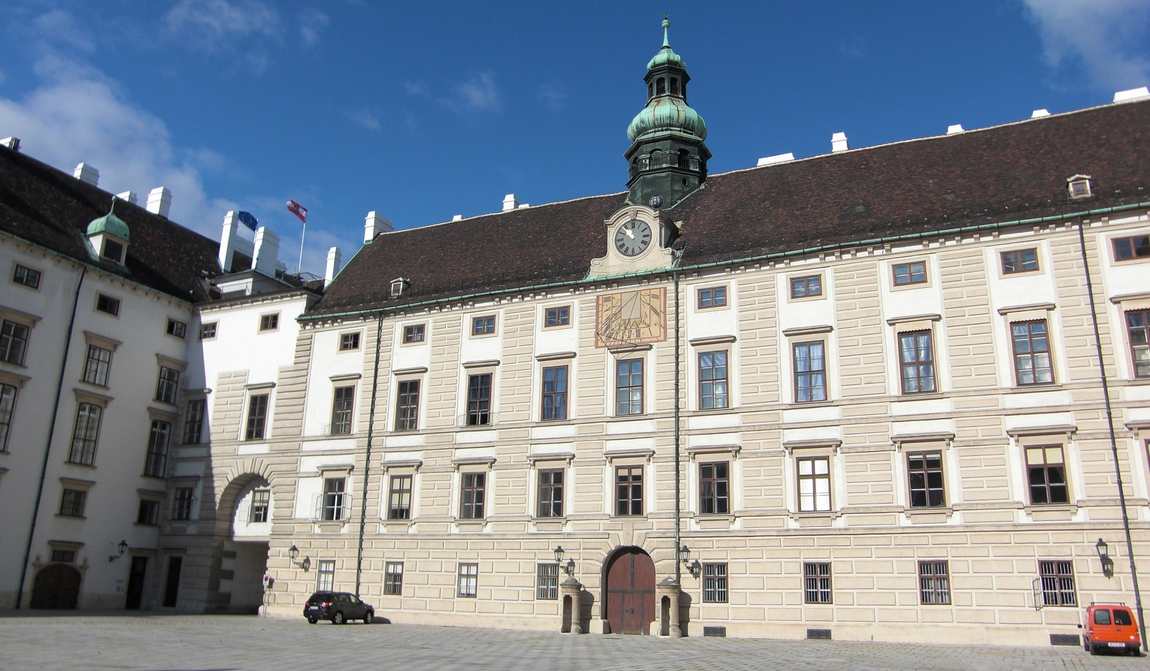
Wing of the Imperial Chancellery
The building was constructed in 1730 by J.E. Fischer von Erlach at the request of Emperor Charles VI, although the main wing was designed by Johann Lukas von Hildebrandt.
Until 1806, this part of the palace was the residence of the Empire's dignitaries. Today it houses the State Chancellery.
Ballhausplatz
The square was named after the "House of Balls" opposite the Secret Chancellery. In the middle of the 18th century, a game similar to modern lawn tennis was played here.
The Balhausplatz has been a symbol of Austrian politics for two and a half centuries. Even in modern times, the square has not lost its political significance, as it is the seat of government.
St Joseph's Square
Several centuries ago, Josef Square served as a cemetery for Augustinian monks. It was then turned into a park and later into a riding school.
Emperor Charles VI demolished the castle walls, built a palace library (now the Hofburg National Library in Vienna) and opened the square to the public.
The square has a harmonious layout and is notable for its original classical portal.
St Augustine's Church
This court church was once the site of the most important official ceremonies — weddings and funerals. The church building looks exquisite and rather modern thanks to the constant renovations it has undergone over the centuries.
The original cloister was built in the 13th century by the architect Dietrich Ladtner von Pirn.
The main attractions of the church are the tombstone of Archduchess Maria Christina and the Crypt of the Heart, built in 1634 in the Chapel of St George. It contains the ashes of 54 members of the country's ruling dynasty.
Winter arena
The arena where the horses performed during the cold season was built by Fischer von Erlach. It once served as a winter garden for the entire imperial family.
The elegant architecture is matched by an equally elegant interior, decorated in pastel shades that contrast with the purple background of the proud Lipizzan horses.
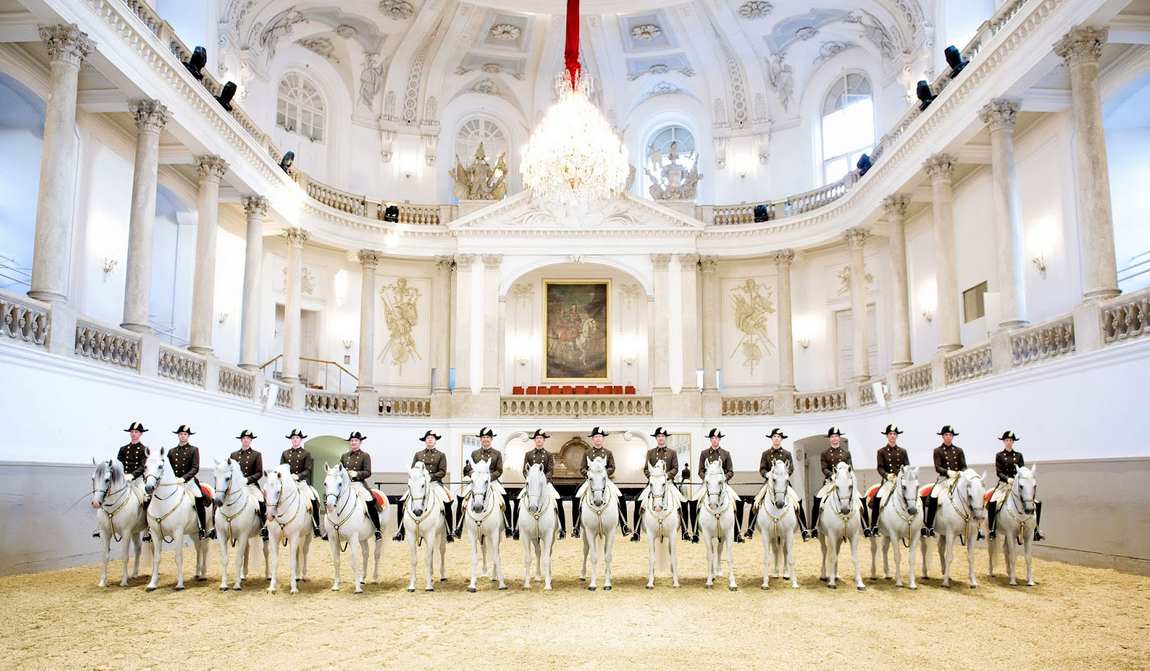
Neuer Markt Square
The first mention of the New Market Square can be found in the chronicles of the 13th century. Its main function was to supply the population with food. Flour and grain were also traded there. The square is surrounded by houses built in the best bourgeois tradition.
There's also the Capuchin Church and the Imperial Crypt, where the 146 members of the Habsburg dynasty are buried.
To make sure you don't miss anything and to appreciate the splendour of every corner of the palace, take a look at the map of the Hofburg, which highlights the most interesting objects.
Monuments of the Hofburg Palace in Vienna
Many of Vienna's Hofburg monuments are located in the Burggarten park. The most famous and most visited sculpture is the Mozart Monument, erected in 1836.
The Baroque white marble work was created by sculptor and architect Viktor Tilgner, an honorary member of the Vienna Academy of Fine Arts.
It is interesting to note that 77 years passed between the laying of the foundation stone and the unveiling of the monument. Today we see the great Amadeus leaning on a score and standing on a pedestal depicting scenes from his operas.
The monument to Abraham a Santa Clara was erected in 1928 and is a tribute to the Augustinian monk, court preacher during the second Turkish siege, talented writer and witty satirist. His work influenced the development of modern German literature.
At the centre of In der Burg is a statue of the emperor in a Roman toga on a pedestal supported by four statues — symbols of peace, strength, faith and justice.
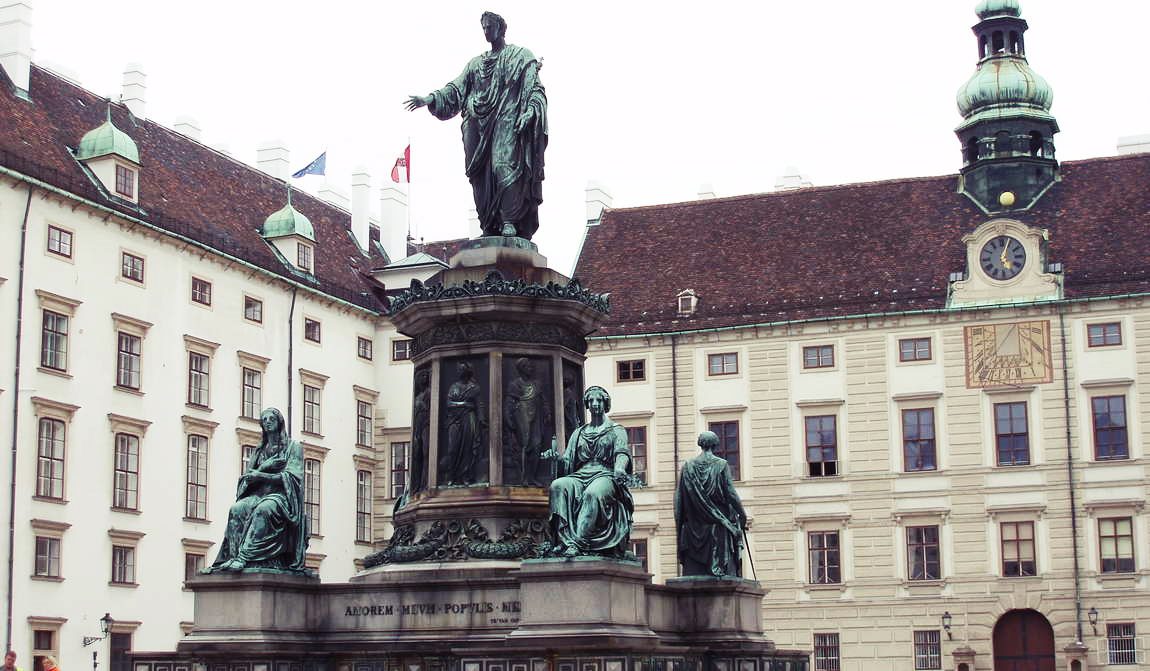
The ensemble is dedicated to Francis II, the last ruler of the Holy Roman Empire. It was designed by the Milanese sculptor Pompeo Marchesi.
The bronze statue of Francis Joseph I is the only stone statue of the emperor created until 1957. Other notable sculptures include a monument to Goethe, statues of Joseph II and Eugene of Savoy on a warhorse, and a monument to Archduke Karl on the west side of the Neue Hofburg.
What's interesting for children
What can young children and schoolchildren see at the Hofburg? Travelling through the Hofburg in the dark is a truly original and exciting experience!
To make the experience even more thrilling and unforgettable, everyone on the tour, including children, will be given a torch to shine in the dark and explore the most hidden and secluded corners of the Imperial Apartments. A maid and valet will accompany you on your fascinating journey.
An exciting world of historical drama and adventure awaits you. Please note that the tour runs two or three times a month (please check the museum website for the exact schedule) and tickets must be purchased in advance directly from the ticket office.
There are no online or telephone bookings available. The evening walk is suitable for adults and children aged 7 and over, as younger children are more likely to be frightened than excited by the ghosts of a bygone era.
For children over the age of 6, there are special educational tours called 'In the Footsteps of the Beautiful Sisi', where they can learn about the personality of the astonishing Empress.
Was she really as beautiful as she is portrayed in novels and fairy tales? How did she live, what were her hobbies, who did she love? Curious schoolchildren will get clear answers to all their questions.
This tour must be booked in advance by telephone or online. It is led by a professional children's guide who can present any material in an accessible and engaging way.
Pupils will be able to communicate with each other and their guide, ask questions, discuss and express their own opinions.
.jpg)
Don't forget to take your children to the Wien Weltmuseum, which offers exciting activities every Friday for children aged 3 to 6 and schoolchildren aged 6 to 12.
Each playful activity focuses on the culture and traditions of the different regions. Younger and older guests will not only play, but also complete interesting tasks and take part in hands-on workshops and quests.
Girls will be particularly interested in Sissi's luxurious outfits and household items, while boys will enjoy a visit to the armoury.
After an exciting journey, you can also take a break outdoors. Kids will love the idea of riding around the Hofburg in an antique horse-drawn carriage with a chauffeur.
And if hikers get hungry, the famous and popular Demel pastry shop is within walking distance of St. Michael's Square.
Interesting facts
Some of the stories, events, legends and facts about the Hofburg in Austria may seem strange and even amusing to travellers. For example, why is the palace complex so huge?
It turns out that each successive Austrian ruler never occupied the apartment of the previous ruler, so they had to build their own 'mini-palaces'.
As a result, the Hofburg doesn't have a single style and presents tourists with a combination of all kinds of architectural styles, such as Gothic, Renaissance, Baroque, Neoclassical and Neo-Ampire.
There is also much to admire and marvel at in the Sisi Museum. For example, there is a leather pouch containing a syringe and cocaine - the empress's main cure for the depression she suffered from after the death of her son.
Interestingly, the drug was quite legal at the time as it was considered a medicine and not a psychotropic substance.
There was a time when the Hofburg became a refuge for the more frivolous events of the day. The Konzerthaus - a sanctuary for classical music - once hosted jazz nights, lectures, boxing matches and even spiritualist séances.
During the Second World War it became the centre of propaganda broadcasts for the Third Reich.
Useful tips
To explore all the beauties of the Hofburg in Vienna, it is worth spending a day or more. And to get as much information as possible, it's best to book a guided tour.
What else should you know?
- The student discount is only available if you have an international student card.
- Disabled visitors are entitled to a discount if they can show proof of disability. Accompanying persons who are blind or use a wheelchair are admitted free of charge, but their name must appear on the documentation.
- All tickets can be ordered online from the museum's official website.
- The most expensive ticket (but well worth the price!) is a package that includes a visit to the Sisi Museum, the Imperial Suite and the Silver Collection.
- Audio guides or written descriptions are available in 13 languages.
- If you would like to visit the Hofburg with colleagues or friends, please note that groups of 10 or more must be booked in advance and the maximum number of people per tour is 35.
- Photography is permitted, but only in the rooms where the Silver Collection is on display.
- In addition to the sights of the palace complex, visitors with a Sisi ticket can also visit Schönbrunn Palace and the Hofmobiliendepot, a museum of imperial furniture.
- It is not uncommon for tourists to visit this attraction just before they leave and leave their luggage in the luggage room. The Hofburg does not have any facilities for storing bags and suitcases.
When you book an exclusive private tour of the Hofburg Imperial Palace in Vienna, you will experience the majesty and luxury of the Imperial Palace and feel as if you are the owner of its countless treasures and architectural gems.
Another unique service at the Hofburg is the Romantic Evening Tour (after 18:00), which allows you to explore the Imperial Apartments in a particularly intimate atmosphere.
There is also a special offer for senior citizens. It includes a visit to the Silver Collection, the Sissi Museum and the Imperial Apartments.
The price of the tour includes not only an audio guide but also a delicious meal in the adjacent Hofburg Café — sausage snacks, coffee, chocolate, strudel and other pastries.
Tours of the Vienna Hofburg are usually offered in October, November, January and March. These are the quieter months between the seasons, when older tourists can enjoy the cultural and culinary delights in peace and quiet, away from the bustle of large groups of tourists.
It is not enough to talk and write about the imperial residence. To appreciate the grandeur of the Habsburg palace you have to come and see it for yourself - walk through the imperial apartments, ride in a horse-drawn carriage, visit the Imperial Treasury, enjoy the landscaping of the Hofburg gardens and live the life of royalty.


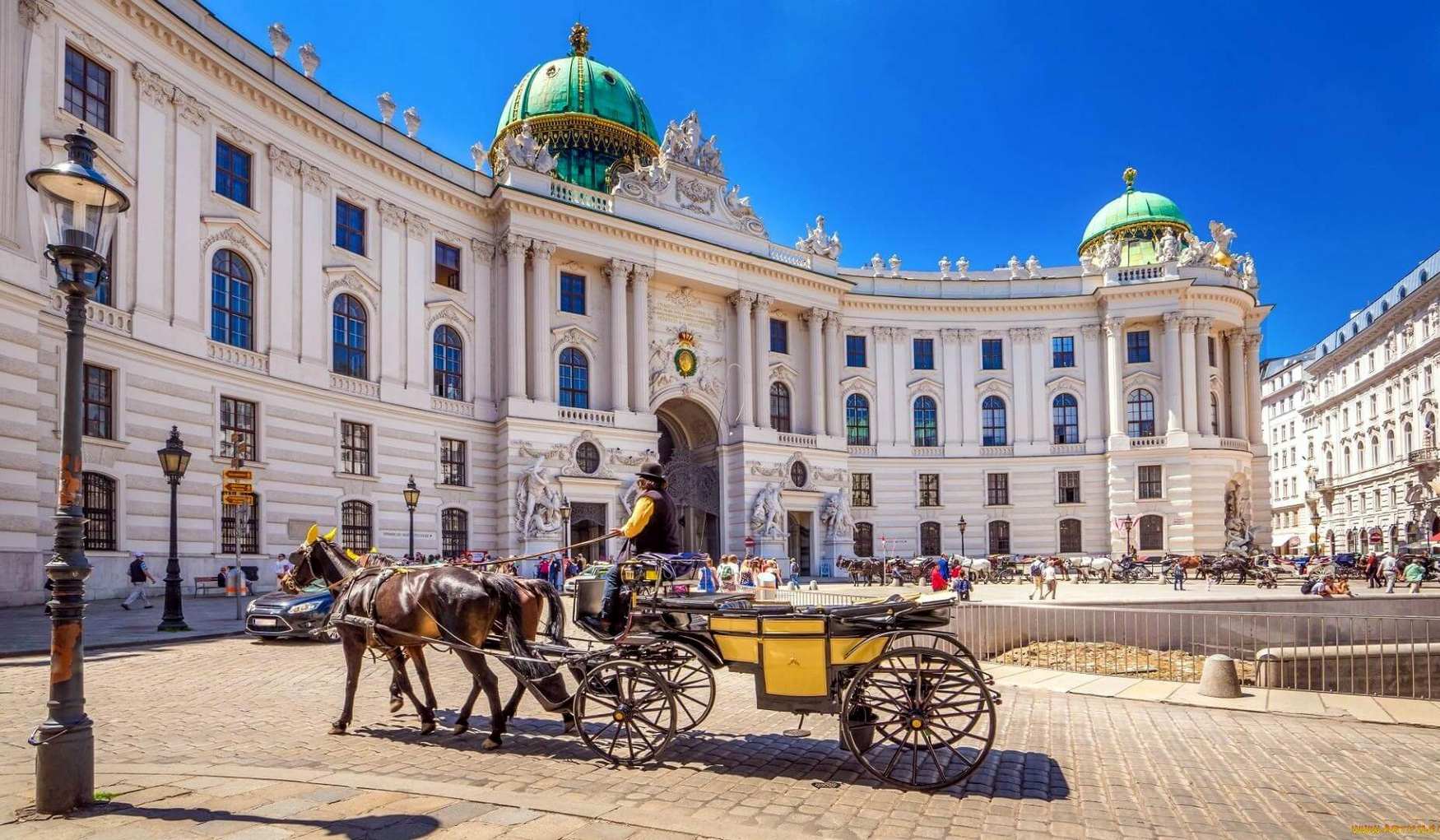

.jpg)


.jpg)
.jpg)
.jpg)
.jpg)


.jpg)
.jpg)
.jpg)
.jpg)






.jpg)

